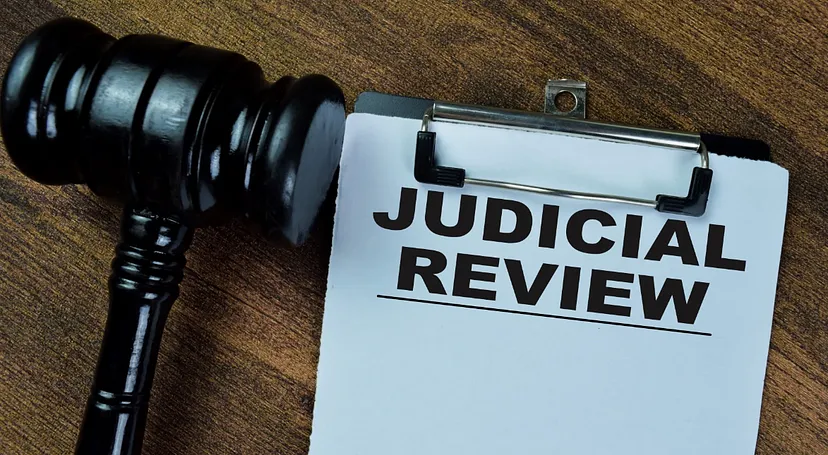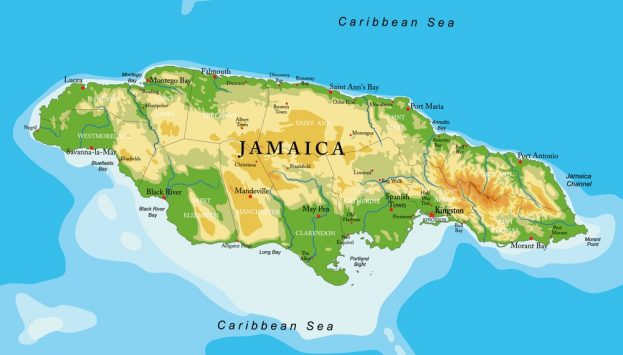
“Ye will surely say unto me this proverb. Physician heal thyself” — Jesus of Nazareth
The power of the people is more powerful than that of the judiciary. That sounds like wishful thinking, given how the Supreme Court of the United States has been behaving over the years. But, is such a statement devoid of logic, or is it far removed from reality? I do not think so. It is easier for constitutional laws that have been initiated by the judiciary to be overturned, by the judiciary, than it is for those laws that were initiated and ratified by the people through constitutional amendments. However, the process to enact or repeal laws via constitutional amendments is a far more difficult route to travel than that which the justices on the Supreme Court have in that regard.
It has oft been stated by constitutional scholars and by historians that the framers made the process of amending the Constitution an arduous one because of the serious implications involved in making any changes to it. But, that they ever anticipated the need for changes is obvious from such a constitutional provision.
What scholars and historians have also agreed on is that when the founders considered and established the three branches of federal power — those being the legislative, executive and the judicial branches — as part of a system of “checks and balances” so as to ensure that none of them would have more power than any of the others — that they had never envisioned the transformation of the court to wield greater power over the other two branches as it does now. In fact, the power often used by the Supreme Court to laud it over the Congress and the White House, often referred to as “judicial review”, was not so enumerated in the Constitution but one which the court had arrogated to itself and which, over time, had become accepted as a norm.
Judicial reviews, for examples, had decided that African Americans were property and that they could never be citizens of the United States; had ruled that racial segregation was lawful; had determined that corporations have the same rights as individuals; had decided that how corporations spend their money to influence political elections in their favor is the same thing as “free speech”; had decided the outcome of a presidential election; and had eviscerated federal laws designed to protect the voting rights of citizens.
In the landmark case of Marbury versus Madison in 1803, The Supreme Court established the principle of “judicial review”, meaning that American courts have the power to strike down laws and statutes that they find to violate the Constitution. The ruling had come to be regarded as the single most important decision in American constitutional law. But, if one looks at the document, the concept is not so enumerated in it. It was not written into the document as that was not the intent of the framers.
The irony of this is that there are some justices on the high court who have prided themselves as exemplars of the philosophy which pertains to the notion of interpreting the document based upon what they believe to be the original meaning of the words contained therein, and also upon the intent of the framers of the document. Some who champion such ideas see themselves as “originalists”, or as “strict constructionists”, or as “textualists”, and yet they seem to be completely blind and dumb to what they and their predecessors have been doing from the bench for hundreds of years, which is not supported by the document.
They have been quick to tell litigants who come before them about what rights are clearly enumerated therein and of those which do not appear. They have often been quick to say — based upon their vaunted legal opinions — which rights are “implied”, by looking at clauses in the different articles of the document, and by studying the amendments which have been made, in order to arrive at their decisions. And yet, with all that, the court has taken upon itself to rule in cases it chose to hear, without examining its own role with respect to judicial review.
The Supreme Court is an appellate court, and not a trial court and so who would initiate the process? It has been known to take advantage of cases brought before it on appeal to revisit, affirm, revise and even repeal previous decisions. In some of its published opinions — whether written on behalf of the majority or in dissent — justices have made appeals to prospective litigants to bring certain cases before the court in order to provide it with opportunities to overturn or re-write laws. (That sounds like judicial activism). But, to police itself on “judicial review”, or on other issues — not a word has it uttered. Again, should anyone be surprised, given the fact that the Supreme Court has proven indifferent or resistant to any idea with respect to abiding by rules of ethics which would govern its own behavior, whether such rules are imposed on it by Congress — a power which falls well within the purview of the legislative branch — or by the Supreme Court itself? After all, the document allows for lifetime appointments of the justices — depending upon their “good behavior”. Such ethical considerations have nothing to do with how the court rules on cases, but it has everything to do with its correct handling of “due process” — even by how it appears to perform such duties.
If the idea of judicial review and of stare decisis were clearly outlined in the Constitution, from the very beginning, or if they were included by a vote of Congress and ratified by the several states, via an amendment, then I could understand why the court behaves as it does. But, judicial review is not there, and this has opened the door to arbitrariness in its rulings as history can so clearly attest.
How many Supreme Court justices, over the years, at their confirmation hearings before the Senate Judiciary Committee, when pressed about laws passed by their predecessors, who had affirmed that such legal precedents were a part of the longstanding laws of the land, once having been confirmed, ended up reversing such rulings handed down by the court? Regardless of which side of the issue of the Roe versus Wade ruling that one falls on, for example, a law which was passed by the Supreme Court on judicial review in 1973, and which stood for almost 50 years before it was repealed in 2022, how it was summarily overturned by the opinion of a few justices on the bench ought to be a matter of concern for all, if for nothing more than that of principle.
Roe versus Wade is just one case, but let us look at another, based upon its so-called “judicial review”, that being the landmark decision of Brown versus The Board of Education, made in 1954, which toppled Jim Crow Segregation laws in the South. It was a unanimous decision made by the Supreme Court, which many legal experts have argued was a violation of the Constitution and was a fruit of what they call “judicial activism”, going against precedent, despite the morally just outcomes that were achieved for African Americans. Brown versus The Board of Education, a legal precedent, regardless of how one feels about that ruling and its outcomes, on principle, is no different than the foundation upon which Roe versus Wade was built. The court is as much a threat to that precedent set in 1954 as it was to the Roe versus Wade precedent.
Although the former is a much older precedent, there is, absolutely, nothing to stop the Roberts’ Court, or any future court for that matter, whether conservative or liberal leaning, to overturn that consequential decision of 1954. The only thing which rests on a more solid jurisprudential footing, and which would provide a more enduring bulwark against rulings that could take the country back to the days of Jim Crow Segregation laws is a constitutional amendment created and ratified to that end by the people exercising the democratic process.
It is not so easy to send African Americans back into slavery, because an amendment now protects them against that, and a repeal of that amendment is unlikely, just as it is with that which covers access to guns. For the same reason, it is not easy to take away their right of citizenship, it is not easy to take away their right to vote, completely, and it is also not easy to repeal the amendment which honors the hard fought and hard won battles of women for their rights under the Constitution. Such rights cannot be touched by the prejudices nor by the whims of judges — regardless of which side of the political divide they fall on.
And so, legislatively, if the Supreme Court is unwilling or is unable to exact “judicial review”, upon a “right”, or a “privilege”, or something akin to contraband that it has long considered itself to possess — one which it had arrogated to itself — then it is up to us — “we the people” — to do so for it via the passing of constitutional amendments. The 13th, 14th and 15th Amendments, ratified after the Civil War, which raged between 1861 and 1865, not only placed a check upon the racist, Jim Crow states in the South, but also upon racist judges — whether those who were appointed to the federal bench or who were voted unto the bench in the several states, in their administration of justice or injustice. Because the anti-slave north had gained the ascendancy in Congress, it was able to address certain issues that the high court found itself unable or unwilling to address. Voting in elections, therefore, whether they be municipal, state or federal, is not an idle luxury, but an exercise, to a greater or lesser degree, of a review made on the employment of all public officials who work for “we the people” and of their policies.
Now I have heard some in society who have been arguing for term limits to be imposed upon Supreme Court justices, and, no doubt, also upon other federal judges. Others have suggested an increase in the number of justices sitting on the Supreme Court. They posited those ideas with a view to correct what they see as problems which exist on the court in its administration of justice. Thank God for the power of impeachment. There have been more federal judges who have been impeached and removed from office than presidents in U.S. history. However, I believe that such suggestions are akin to landscapers who find themselves engrossed in pruning the limbs of trees or in using weed-wackers on unwanted weeds, without addressing their roots.
The root of the problem, in my opinion, is, more so, than anything else, the unwieldly nature of “judicial review” which is like a tumble weed being blown about by questionable jurisprudential approaches to what is contained in the document, and by philosophies born out of various competing political agendas. The problems of the court, due to the awesome power that it wields, abusively, will persist and will continue to pose a clear and present danger to the nation if it continues to grow unchecked.
Finally, although I understand the mathematics of, for examples, 5 to 4 rulings or 7 to 2 rulings on cases, with judges in dissent, would the Supreme Court be able to enact new laws from the bench, with ease and with bluster, if it could only do so by a majority vote? Discussions need to begin in Congress and in the various state legislatures as to what steps need to be taken in order to achieve the balance of power among the three branches of the federal government as the founders had intended.



